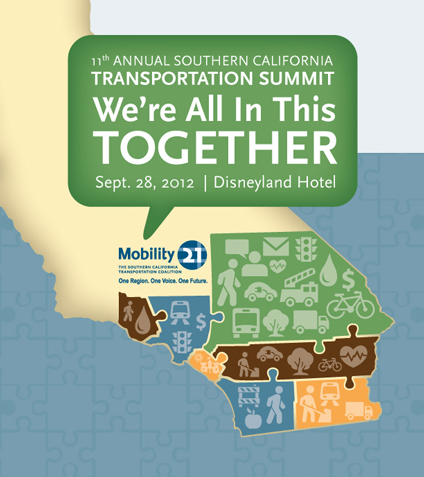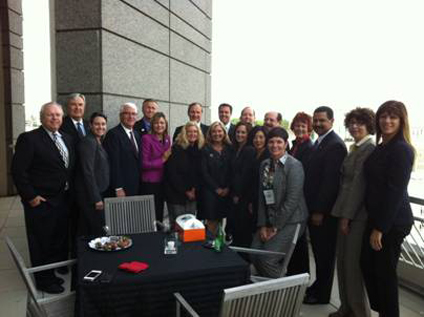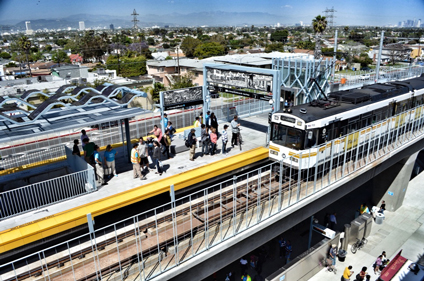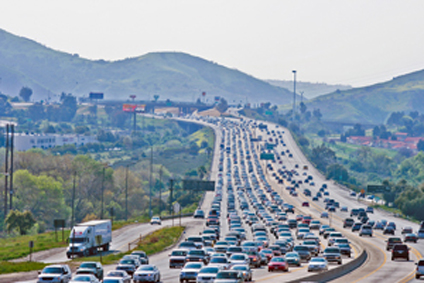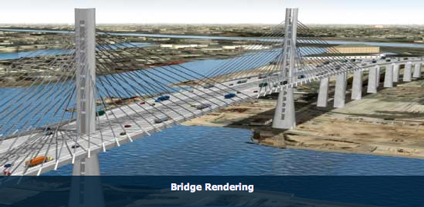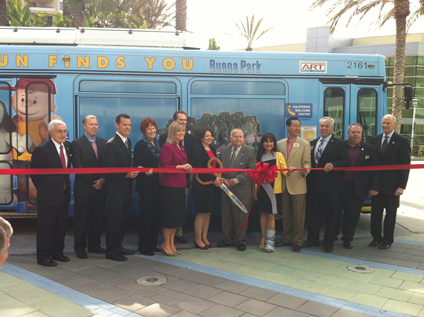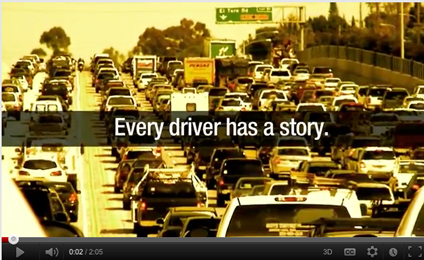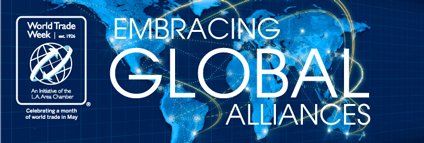Summit Sponsorships Selling Quickly
Sponsorships are selling quickly for the 11th Annual Southern California Transportation Summit on Friday, Sept. 28 at the Disneyland Hotel. Don’t miss out on a unique marketing opportunity for your business while helping to bring more transportation funding to Southern California.
Available sponsorships include:
- Presenting Sponsor
- Platinum Sponsorships
- Closing Session Sponsor: Includes special recognition during closing session
- USB Drive Sponsor: Includes logo and pre-loaded marketing material on USB drive
- WiFi Sponsor: Includes name recognition as WiFi internet access sponsor, internet users will be directed to company website immediately after login
- Silver Sponsorship
- Morning Coffee Break Sponsor
- Copper Sponsors (unlimited availability)
- Bronze Sponsors (unlimited availability, open to small businesses and nonprofits)
Click here to view more information about the sponsorship packages.
Sen. Dianne Feinstein Working to Bring Transportation Dollars Home
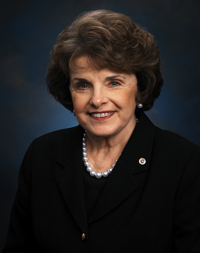 This month Sen. Dianne Feinstein (D-CA) shares some of the biggest challenges facing transportation and ways she plans to overcome obstacles to improve mobility in Southern California.
This month Sen. Dianne Feinstein (D-CA) shares some of the biggest challenges facing transportation and ways she plans to overcome obstacles to improve mobility in Southern California.
M21: You have been a leader in Washington, D.C. for the needs of California transportation stakeholders for many years. What are you most proud of in terms of your office’s transportation leadership?
DF: If I were to point at one accomplishment I was proudest of, it would be my work to increase fuel efficiency.
In 2007 I authored landmark legislation with Sen. Olympia Snowe (R-ME) that increased fuel economy standards on all vehicles for the first time since the 1970s. That bill will likely result in a fleetwide fuel economy average of 54.5 mpg by 2025.
I have called for the Department of Transportation and the Environmental Protection Agency to establish stronger fuel-economy standards and increase consumer information to reduce pollution and save money for American families and businesses.
The agencies are currently establishing first-ever standards for medium- and heavy-duty trucks and for new cars, light trucks and SUVs for model years 2017 to 2025.
I am also very proud of my work to secure funding for new transit projects, highways, rail projects and goods-movement projects. These vital transportation initiatives reduce pollution, increase mobility and improve the lives of all Californians by reducing the amount of time they spend in traffic.
M21: Have you observed a change in how Californians are advocating for transportation in Washington, D.C. in recent years? Is the advocacy becoming more effective?
DF: The single most far-reaching change is the current ban on congressionally directed spending, or earmarks. This ban has eliminated Congress’ ability to direct federal funds to critical projects with demonstrated need.
With limited federal funds, programs such as the Transportation Infrastructure Finance and Innovation Act (TIFIA) loan program (which leverages $10 in loans for every $1 of federal money) become even more important—and more competitive. That’s why groups like Mobility 21 play such an important role in keeping my office and the Department of Transportation aware of the most necessary projects.
One example is Riverside County’s State Route 91. For years I have urged federal funds be awarded to the Riverside County Transportation Commission so this critical and extremely congested highway can be widened. In April, that work paid off when Transportation Secretary Ray LaHood informed me that Riverside had been awarded the final portion of a $444 million loan that will allow construction to begin.
M21: What is the biggest challenge facing transportation systems or policy in California today and how do you propose to resolve the issue?
DF: A major challenge facing transportation policy is limited funding, which in many cases continues to shrink. We must make existing dollars go farther, and that means supporting the most cost-effective programs and making tough choices. I am working to address this in several ways, including the TIFIA loan program and expedited permitting processes.
TIFIA serves as a Transportation Infrastructure Bank in all but name, helping qualified projects advance that otherwise may be delayed or deferred because of their size, complexity or uncertainty over the timing of revenues. Each federal dollar can provide up to $10 in TIFIA credit assistance, which further leverages $30 in transportation infrastructure investment.
Additionally, we made great progress in April when $2 billion for mass transit investment was included in the Senate’s fiscal year 2013 Transportation Appropriations bill. The bill provides funding for seven mass transit projects in California, including two Los Angeles subway projects (the Westside Subway Extension and the Regional Connector Transit Corridor) that are at the heart of a plan to build a comprehensive transit system in America’s second-largest city.
Other projects included in that bill are the Bay Area Rapid Transit (BART) Silicon Valley Extension Project, the San Francisco Central Subway Third Street Light Rail, the Van Ness Avenue Bus Rapid Transit, the South Sacramento Corridor and the Fresno Area Express Blackstone/Keys Canyon Bus Rapid Transit.
Finally, I have worked to reduce the permitting burden in California by expanding the highly successful program under which NEPA is administered by Caltrans. In the Senate version of the surface transportation authorization bill, an amendment I authored will expand this program to include transit and rail projects.
M21: Based on feedback from your constituents, what would you say is the biggest transportation wish-list item that needs to happen in the state?
DF: What I hear most from my constituents is the need to address traffic and goods-movement problems in Southern California. That challenge requires three things:
- a serious transit/subway system that matches the greatness of Los Angeles;
- a freight strategy to address rail crossings and truck traffic; and
- local investment in creatively financed roads including congestion pricing, local sales taxes, toll roads and good planning.
California has some of the most congested roadways in America. According to the 2010 Urban Mobility Report, the average Los Angeles commuter spends 63 hours each year stuck in traffic, costing $1,464 per person. In greater Los Angeles, commuters spend 515 million hours stuck in traffic every year and waste 407 million gallons of fuel—an economic cost totaling $12 billion.
Heavy traffic congestion in many of the state’s urban centers has led to increased pollution, significantly longer travel times and lost productivity. Either we continue to depend on existing roads and airports or we build new and more efficient ways to move people and goods about the state.
Mobility 21 Executive Director Marnie O’Brien Primmer joins the Orange County Business Council’s Washington, D.C. advocacy trip in April to fight for transportation in our nation’s capitol.
Federal Long-Term Transportation Bill Headed to Conference
The clock is ticking for Congress to take action on passing a long-term transportation bill. At the end of April, Congress appointed conferees to reconcile the Senate-passed bill, S. 1813, with the House’s bill, H.R. 4348, which takes the place of the more comprehensive H.R. 7 package that did not receive enough support to make it through the House.
Tough negotiations while the legislation is in conference stand between a long-term transportation bill and the possibility of stop-gap extensions if Congress does not take action by June 30. With the Highway Trust Fund, the main source of transportation infrastructure funding, projected to run out before the end of the year, Congress is under pressure to find new sources of funding in the short and long term.
Passengers board the Metro Expo Light Rail Line for the first time on Saturday, April 28.
Los Angeles Celebrates Opening of New Metro Expo Light Rail Line
Last week, local and state dignitaries and members of the public celebrated the official dedication of the new Metro Expo Light Rail Line in Los Angeles.
Under construction since 2006, the new Metro Expo Line spans 8.6 miles between downtown Los Angeles and Culver City with more construction currently underway to expand the line another 6.6 miles to reach Santa Monica by 2016.
Expo links the Westside with downtown Los Angeles via a joint station serving the Metro Red, Purple and Blue lines at the 7th Street Metro Center Station. Together, these lines crisscross the region making connections with the Eastside, Long Beach, Redondo Beach, Norwalk, Hollywood, North Hollywood, Pasadena and the San Fernando Valley.
On Friday, Los Angeles Mayor and Metro Board Chair Antonio Villaraigosa joined state and local elected officials, along with Metro and Exposition Metro Line Construction Authority executives to officially celebrate the dedication of the new line at a special ceremony adjacent to the Expo Park/USC Station near the University of Southern California.
Then on Saturday and Sunday, the public celebrated with free rides on the new line and community events along the alignment. Regular revenue service began Monday, April 30.
About 280,000 vehicles travel each day along the SR-91 in Corona, which is the primary route for commuting, goods movement and tourism between Riverside County and Orange County. Traffic congestion is common not only during peak morning and evening commute hours, but also on weekends.
Relief is Coming to SR-91 Commuters
Almost every driver in Southern California has a nightmare to tell about State Route 91 (SR-91). Yet, thanks to good news in April from the U.S. Department of Transportation (DOT), relief is on the way for beleaguered travelers between Orange County and the Inland Empire.
On April 24, Transportation Secretary Ray LaHood announced that the SR-91 Corridor Improvement Project would be eligible to receive a $444 million loan from the Transportation Infrastructure Finance and Innovation Act (TIFIA). This loan will clear the way for the Riverside County Transportation Commission (RCTC) to construct a $1.3 billion improvement to the SR-91 between Interstate 15 (I-15) and the Orange County line. This innovative project will extend the existing 91 Express Lanes by 11 miles into Riverside County while also reconstructing several interchanges through the City of Corona, including adding a new high-occupancy flyover connector to I-15. The project is funded by voter-approved Measure A sales taxes and toll revenue from the new Express Lanes.
“This is an enormous economic boost and will make it so much easier to travel to and from the entire region,” said RCTC Chairman and Riverside County Supervisor John J. Benoit.
A recent study by Beacon Economics indicates that the net economic and time savings benefit of the SR-91 Project will exceed $3.2 billion and create as many as 14,000 jobs during the five-year time-span of construction. The overall length of construction will be considerably shortened through the use of design-build contracting, an approach approved specifically for this project via state legislation authored by Assemblyman Jeff Miller (R-Corona) in 2010.
Securing this highly competitive funding from Washington required a bipartisan effort by government, business, and civic leaders across California. Sen. Dianne Feinstein (D-CA), Rep. Ken Calvert (R-Corona) and Rep. Jerry Lewis (R-Redlands) took the lead in championing the SR-91 on Capitol Hill over the last year. Mobility 21 allies such as the Greater Riverside Chambers of Commerce, the Monday Morning Group and Inland Action played a key role in voicing the private sector’s need for a better SR-91 for all of Southern California.
RCTC will now begin the process of selecting one of four pre-qualified design-build firms while the environmental document is finalized this summer. Construction of the expanded freeway is expected to begin in late 2013.
The new bridge replacing the existing Gerald Desmond Bridge will be built with a cable-stayed design. With 200 feet of clearance over the water, the new bridge will be high enough to accommodate the newest generation of the most-efficient cargo ships.
Project to Replace Aging Long Beach Bridge Eligible for Federal Loan
The SR-91 Project in Riverside County wasn’t the only project to receive good news from Transportation Secretary Ray LaHood. The Port of Long Beach is also eligible to apply for a TIFIA loan for the Gerald Desmond Bridge Replacement Project.
The Gerald Desmond Bridge is a vital link in the nation’s trade system and a major commuter corridor. But the bridge, built in the 1960s, was not designed to handle today’s traffic volumes and is deteriorating. The bridge currently wears a “diaper” to catch falling debris.
A nearly $1 billion replacement project will ensure the safety of commuters and truck drivers and protect Southern California’s important role as a major trading hub. Construction is expected to last five years and generate, on average, 4,000 jobs per year.
Mobility 21 Advisory Board Member and Anaheim Transportation Network Executive Director Diana Kotler, pictured with scissors, celebrates new Anaheim Resort Transportation service to Buena Park and Santa Ana during a ribbon cutting ceremony with dignitaries.
Anaheim Transportation Network to Serve Buena Park and Santa Ana
The Anaheim Transportation Network recently announced two new routes linking the Anaheim Resort area with other destinations in Orange County. Route 18 will connect Anaheim to Buena Park and Route 19 will link to Santa Ana.
“We are very excited to provide an opportunity for guests who are staying in the Anaheim Resort to explore everything Orange County has to offer,” said Diana Kotler, Mobility 21 Advisory Board Member and Anaheim Transportation Network Executive Director, during a ribbon cutting ceremony. “Each route was very carefully designed to make sure we accommodate the residents of Buena Park and Santa Ana so they can have an opportunity to enhance their transportation options for work and play.”
ART is a fixed-route transportation system for the City of Anaheim and the greater Anaheim Resort area.
Completing the final 16 miles of the 241 Toll Road would complete Orange County’s 67-mile toll road system and would provide a desperately needed alternative to I-5 in South Orange County.
South Orange County Residents Share Support for 241 Toll Road
Every driver has a story. For the majority of drivers in South Orange County, their story includes tales of traffic congestion on the Interstate 5 (I-5) and hope for relief provided by the State Route 241 (SR-241) Tesoro Extension. Watch as five South Orange County residents share their stories in support of the Tesoro Extension. Visit www.relieveTraffic.org to share your story and show your support.
World Trade Week Kickoff Breakfast
Celebrate the kickoff of World Trade Week and join nearly 500 executives and members of the diplomatic corps at the 86th Annual World Trade Week Kickoff Breakfast at the Omni Los Angeles Hotel on Friday, May 4!
Featuring Keynote Speaker:
Amy Liu
Program Senior Fellow, Co-Director and Co-Founder
Brookings Metropolitan Policy Program
Brookings Institution, Washington D.C.
Friday, May 4
Omni Los Angeles Hotel
Register | More Info
26th Annual International Electric Vehicle Symposium (EVS26)
Great minds think electric! Register for the 26th annual Electric Vehicle Symposium (EVS26) to hear from more than 200 speakers on the latest in the electric vehicles industry and visit more than 160 companies on the show floor. Drive current and future electric vehicles in the EVS26 exclusive Ride, Drive & Charge event.
May 6-9
Los Angeles Convention Center
Register | More Info
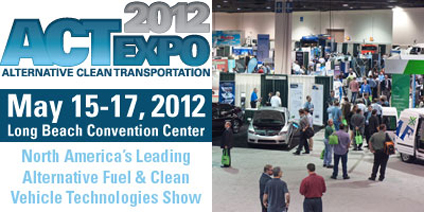
2012 Alternative Clean Transportation Expo
With soaring gas prices and mobile transportation sources being a major source of air pollution in Southern California, now is the time to plan and invest in an alternatively-fueled future.
The 2012 Alternative Clean Transportation (ACT) Expo is North America’s largest convergence of alternative fuel industry stakeholders and will showcase the latest in vehicles, fuels, equipment and technologies across a broad range of applications. Mobility 21 is on board as an ACT Expo Event Supporter, which reinforces Southern California’s role as a leader in clean transportation technologies and emission reduction initiatives. Mobility 21 Advisory Board Members the South Coast Air Quality Management District and UPS among others are participating in the event as sponsors, exhibitors or event supporters as well.
For a current listing of speakers and agenda programming, please view the ACT Expo 2012 Agenda. The discussions that take place at ACT Expo 2012 will result in real projects and enduring air quality progress in the months and years ahead. Join Mobility 21 at the ACT Expo for cutting-edge discussions about the economic, environmental and energy-security benefits of alternative fuel use in transportation.
For more information about the ACT Expo, visit www.actexpo.com, call (888) 993-0302 or email info@actexpo.com. Visit the ACT Expo online at www.facebook.com/ACTExpo and on Twitter, @ACTExpo.
May 15-17
Long Beach Convention Center
Register | More Info
TRANSPORTATION EVENTS IN THE COMMUNITY
Friday, May 4
Los Angeles Area Chamber of Commerce: World Trade Week Kickoff Breakfast
more info | register
Friday, May 4
CMAA: Breakfast with Michael Blomquist and Mitch Alderman
more info | register
May 6-9
EVS26: Electric Vehicle Symposium
more info | register
May 14-17
ACEC: 2012 California Annual Conference, The Sheraton Maui Resort & Spa
more info | register
May 15-17
ACT Expo 2012: The Alternative Clean Transportation Expo
more info | register
Wednesday, May 16
Joint WTS-OC/SD Luncheon: Active Transportation Programs in Sustainability Strategies
May 22-23
California Transit Association: 46th Annual Spring Legislative Conference
more info | register
Wednesday, May 23
WTS-IE: Small Business Luncheon
more info | register
Friday, Sept. 28
Mobility 21 Annual Southern California Transportation Summit
Nov. 11-13
Self-Help Counties Coalition: Focus on the Future Conference
more info

